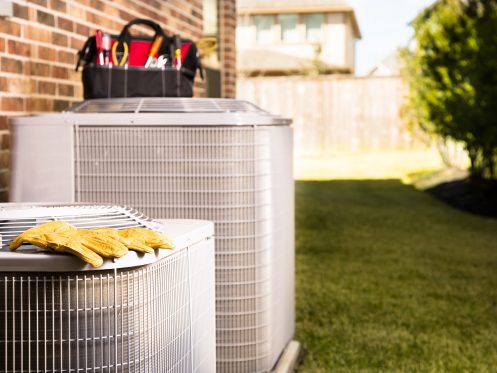Winter has Arrived
In South Central Texas, winter weather — and, consequently, wintertime electricity usage — usually hits peak ferocity in January and February. Granted, “wintery” conditions for our area aren’t quite as extreme as they may be for many regions to our north; however, we do get enough cold temperatures and frosted-over mornings to keep local heating systems humming.
The consistent cold we often experience combined with the fact that heating equipment generally costs more to operate than AC equipment can lead to high electric bills. In fact, the average Cooperative household pays its highest bill of the year during winter.
Are higher-than-average electric bills the inevitable price of comfort during winter? Not necessarily. It is possible to curb wintertime electricity usage without sprouting icicles from your nose. Here are some ideas.
A New AC/Heating System Can Help Significantly Reduce Your Bill
Is your HVAC equipment at least 10 years old? Does it need frequent repairing? If the answer to either question is yes, consider upgrading. The AC/heating business is highly competitive, with consumers who expect and demand new features with each new model and manufacturers who strive to deliver. System efficiency can improve dramatically over the course of 10 years, meaning a new system will help pay for itself through savings during wintertime electricity usage.
A Connected Thermostat Can Help You Take Greater Control of Usage
Internet connectivity combined with advancements in machine learning are helping transform the way homeowners think about and use the humble AC/heating thermostat. What in past decades has been a passive mechanism for controlling the inside temperature has become an active regulator, capable of creating its own heating/cooling schedule and making temperature adjustments without human input. GVEC offers the Nest Learning Thermostat®, the Nest Thermostat E® and the ecobee SmartThermostat with Voice Control. All three models can learn from your usage habits, create a usage schedule and reduce the frequency of your system’s cycles on and off cycles. This can lead to a significant decrease in heating and cooling bills—up to 20 percent or more according to studies.
Seal Leaky Crevices and Cracks
The U.S. Department of Energy estimates that sealing small cracks around doors and windows, along with various other holes, gaps, crevices and cracks around the home can save up to 30 percent a year in heating and cooling costs. Ignoring the problem can lead to a level of wasted electricity that’s like leaving a window open year-round. The cost of caulk and weatherstripping are relatively inexpensive, and most homeowners can do the job themselves, making this an easy, highly cost-effective way to save on heating your home.
Run Ceiling Fans in Reverse
Changing the directions of ceiling fan blades to run in a counter-clockwise direction causes air to be pulled toward the ceiling and propelled outward, where it flows and bounces down the walls. This improves heat circulation and distribution. Just remember to change the blades back to their normal direction when you turn on the air conditioner.
Lay Down Rugs, Wear Socks
Bare tile, wood or cement flooring can feel like icicles to bare feet in wintertime. The cold has a way of spreading through you and making you feel colder, which in turn tempts you to adjust the thermostat. One solution is as close as your sock drawer; a pair of thick socks or house slippers can help insulate your feet. The other solution is to lay area rugs in the problematic areas, adding a layer of insulation between you and the cold. Of course, using socks and rugs together is an ideal way to resist the urge to raise the inside temperature.
Open the Curtains or Blinds
The sun is the single most powerful energy source known. Although most of that energy is wasted (though people are getting steadily better at harnessing it), sunshine can be a powerful way to help heat your home without need of raising the thermostat. Just open the curtains and/or blinds during the day, and let the sun do the rest.
Take Shorter, Cooler Showers
For most homes, the AC/heating system consumes more electricity than other device or appliance. What’s second most? The water heater—up to 20% of the average home electricity bill, in fact. You can take greater control of this expense by dialing down the heat when you shower and by setting a timer to limit the amount of time you spend.
Take Greater Control of Wintertime Electricity Usage with MyGVEC
Monitor wintertime electricity usage with the Usage Explorer Tool in MyGVEC, GVEC’s online usage portal: Log into MyGVEC and click Usage Explorer under the My Usage tab. Click on a month to view the daily usage. Then, select the Cost button (under View Graph by in the upper left corner) and the High and Low boxes under View Temperature. To see the cost, hover your mouse over each daily bar. Please note that the cost shown is only for kilowatt/hour usage and doesn’t include other fees and taxes.



